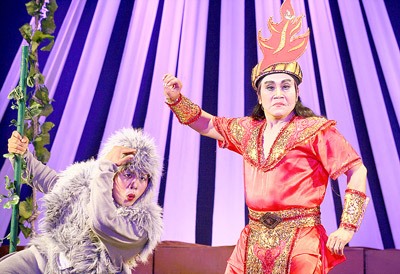 Life & Style
Life & Style

The new and privately owned Núi Nhạn Tuồng (classical drama) troupe has opened in Phú Yên Province’s Tuy Hòa City.
 |
| Tuồng artists wear costumes sometimes weighing up to 10 kilos. They must have a strong voice to sing and dance at the same time and express the emotions of each character. — Photo sankhau.vn |
PHÚ YÊN – The new and privately owned Núi Nhạn Tuồng (classical drama) troupe has opened in Phú Yên Province’s Tuy Hòa City.
Managed by veteran actor Nguyễn Hòa, who has more than 40 years of experience in the industry, the troupe offers shows aimed at young people.
The troupe includes 24 veteran and young actors from Phú Yên and the central provinces of Khánh Hòa, Ninh Thuận and Bình Thuận.
“We want to develop drama for youth, who can improve their knowledge about the country’s history, traditional culture and lifestyle through the art of tuồng,” Hòa said.
He said the troupe was also a good chance for young actors to develop their career. “I believe in the future because I see many audiences excited about the art,” he said.
In the coming weeks, the troupe will offer a series of historical plays, including Phạm Công- Cúc Hoa and Thoại Khanh-Châu Tuấn, both of which highlight the beauty of Vietnamese women.
Preservation
The Vietnamese classical drama of tuồng originated in the 12th century and has developed from a folk art to a royal art in the 17th century.
The art consists of singing and dancing together with music, which are highly stylised and filled with symbolism.
Its themes include monarchist loyalty and patriotic duty, which define the play’s structure, features, language, music, colour, struggles and the personality of the characters.
The art has three performance styles: tuồng phò (plays based on old Chinese stories), tuồng đồ (plays featuring historic Vietnamese events and national heroes) and tuồng hài (comedies about the daily life of people).
On stage, the artists sometimes wear costumes weighing up to 10 kilos. They have to have a strong voice to sing and dance at the same time and express the emotions of each character.
Along with traditional arts such as chèo (traditional opera) in the north and cải lương (reformed theatre) in the south, tuồng has contributed to the spirit and character of the Vietnamese people.
The art, however, is facing a shortage of young and skilled performers.
Lê Chức, a member of the Việt Nam Theatre’s Association, said that performers in tuồng must practise frequently. To perform the movements, artists must use their whole body, from the fingers and elbows to all of the muscles.
Chức, who is a tuồng actor, said: “For dramas, movies or the catwalk, amateurs can practise and perform a little bit, but for tuồng, you cannot do it if you have not been properly trained."
”Cultural authorities need to invest in producing talented and young crews if tuồng is to truly develop,” he added.
There are only 10 professional tuồng theatres across the country. — VNS




